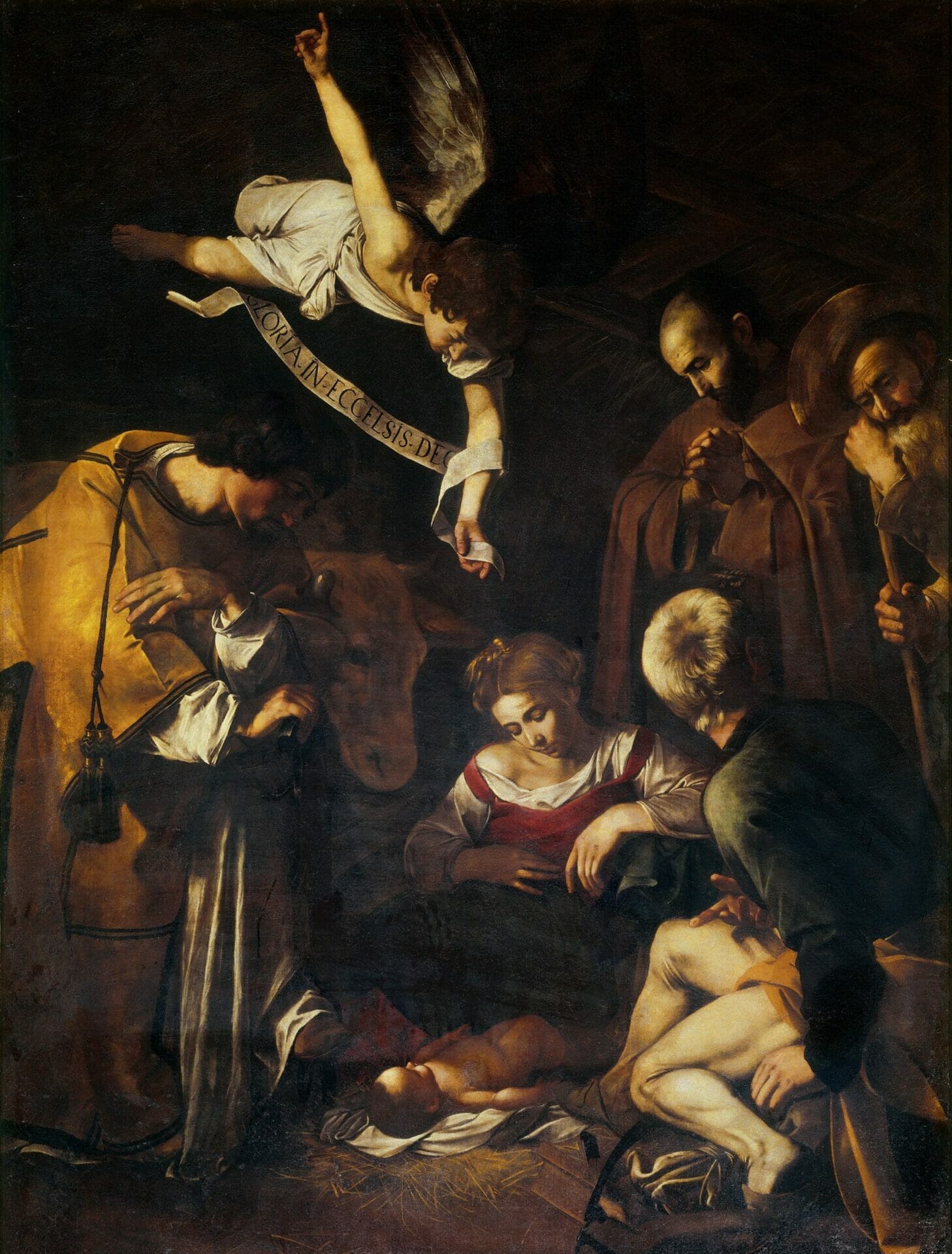
The Nativity | Art comes alive with new technologies
Year
Country
Format
Location of the visited exhibition
Material/Technique
Dimensions
The Nativity with Saints Lawrence and Francis of Assisi is a work by Michelangelo Merisi, known as Caravaggio. Painted in 1600, the work was originally placed in the Oratory of San Lorenzo in Palermo, from which it was stolen in 1969. Based on the accounts of the first biographers Giovanni Baglione and Giovan Pietro Bellori Caravaggio painted the Nativity between 1608 and 1609. Only in recent years, was it was discovered, due to stylistic doubts, that the painting had been commissioned years earlier by the merchant Fabio Nuti in Rome. The canvas depicts the birth of Christ with Saint Lawrence, the owner of the Oratory, and also Saint Francis, to whom the devotion of the Venerable Company, which ran the Oratory at the time.

The intense style of Caravaggio
Caravaggio made the work ‘real’ by giving his characters the faces of the outcasts, the poor. But nobles and clergy were opposed to Caravaggio’s choice. This because he represents the biblical characters as ordinary people, and not as divinities. By representing people, Caravaggio makes the audience part of the painting, so that they can better identify in the work. What makes the canvas more dramatic, however, is the play of light and shadow. The balance between these is Caravaggio’s hallmark. To achieve these effects, the artist studied where to place lamps and candles to create the points of light.
Caravaggio’s personality and style inspired many painters during the 17th century, the so-called Caravaggesque. Among these Caravaggesque painters are Jusepe de Ribera and Artemisia Gentileschi.

Image courtesy of Wikimedia Commons, Public Domain

Image courtesy of Wikimedia Commons, Public Domain
Nativity 2.0
Between 17 and 18 October 1969, in Palermo, Sicily, an organized criminal gang allegedly stole Caravaggio’s Nativity. In 2010, the members of Factum Arte used cutting-edge technology to bring the work back to life. Peter Glidewell, the AMS, Curia’s Cultural Heritage Office, Ballandi Multimedia, and Sky Arte International, are those who initiated the creative process. Sky Arte International created a documentary entitled Operation Caravaggio to immortalize the birth of this “Nativity 2.0”. The restorer Paolo Ferri and the two contemporary artists Adam Lowe and Jordi Pons also collaborated on this project. On 12 December 2015, the 3D copy of the Nativity returned to Palermo, on the altar of the Oratory, bringing back to the city the stolen heritage and with it, also its value and the identity lost by the community.
The new guardians of the artistic heritage
On 15 April 2019, a terrible fire devastated Notre Dame Cathedral. Ubisoft, the producer of the Assassin’s Creed video game, donated 500,000 euros to help rebuild the Cathedral. In addition, Ubisoft has given away a digital version of Assassin’s Creed Unity, the chapter of the series set in Paris, on the uPlay platform. The company’s aim was to encourage players to donate to the reconstruction of the Cathedral.
Rumors said that the video game, with its many views of the Cathedral, could be useful for its reconstruction. However, this was not possible, as the artist Caroline Miousse took some artistic liberties. She had to create additional elements necessary for the game. Other elements, however, had to undergo necessary changes, because a large part of the Cathedral is subject to copyright. But many video games interact with the world of art, including the new chapter in the video game series published by Nintendo, Animal Crossing – New Horizons. So, on the occasion of International Museum Day and the reopening of museums in May 2020, after the closure imposed by anti-Covid regulations, Nintendo decided to give players the chance to open their own virtual museum with a personal gallery.
Another example of art meeting video games is Occupy White Walls. This video game, developed by StickyPixels, allows players to create their own art gallery. The aim of the game is to make art accessible to everyone. In this way, those who do not have the possibility to enjoy a work of art in a museum can do so virtually thanks to Occupy White Walls.
Between 3D reproductions of works of art and videogames that encourage musealization, the hope is that these new technologies can protect artistic heritage. Therefore, what happened to Caravaggio’s Nativity could be an example for the conservation of cultural heritage in the future; a new method of safeguarding community identity.
With the return of Caravaggio’s Nativity, 3D technology has succeeded in something hitherto unthinkable, returning the work to the community and ensuring that Caravaggio’s desire to create a dialogue with his audience, the people, was ultimately fulfilled.
Tag
Buy a ☕ for Hypercritic









